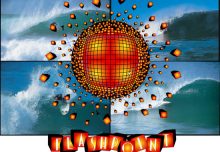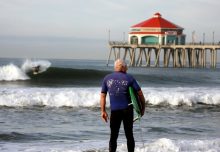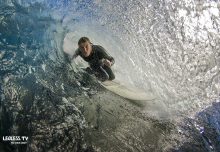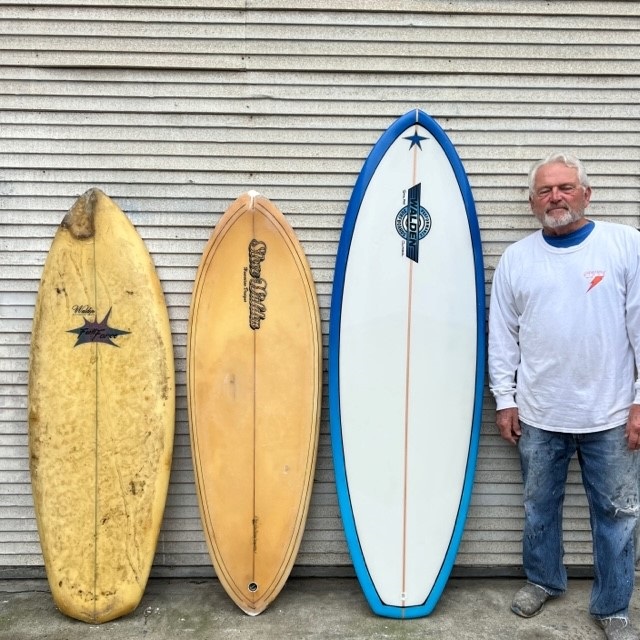
Walden Kneeboards Premier Sponsor
Interview with Steve Walden
It’s been an interesting story in the kneeboarding community that renowned shaper Steve Walden, voted into the Shaper’s Hall of Fame in 2017, has decided to return to giving a genuine focus on turning out high quality, performance kneeboards. His expansive line of surfboards under the Walden Surfboards label and also his line of Surf Tech boards are shipped all over the world. Having experienced his fast and maneuverable kneeboards first-hand in a variety of waves over this last year, I sat down with Steve in his Ventura surf shop to get his perspectives on our sport and the equipment we all enjoy.
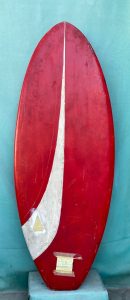
Steve’s first shaped belly board, age 12
Scott Wessling: Steve, you’ve been making boards longer than some of us have been alive! Share some of your history with foam and fiberglass.
Steve Walden: I made my first surfboard in 1960 in my parent’s garage when I was 12, a red belly board that I still have, and then starting making surfboards after that. I went on to eventually have 5 surf shops in Huntington Beach into the early 70’s: Dyno Manufacturing (our production factory), Steve Walden Surfboards, Dyno (retail), Walden Wave Boards, and Sea Ski. Additionally, I had shops in Manhattan Beach, Carlsbad, and San Diego.
Scott: When did kneeboards start becoming a part of your shaping?
Steve: Pretty much right away, beginning around 1969. Dean Cleary used to ride my boards, and other local Huntington-area guys.
Scott: Meanwhile, your standup boards were highly sought after. In the early 70’s, you gathered an incredible team of riders for whom you shaped boards under their own private labels. Who did that include?
Steve: David Nuuhiwa, John Peck, Corky Carroll, and Dale Dobson. I controlled the design and quality, and they released them under their own labels. We had a plane and everything to deliver boards—that was amazing, and I was just in my young 20’s, so it was pretty heady stuff!
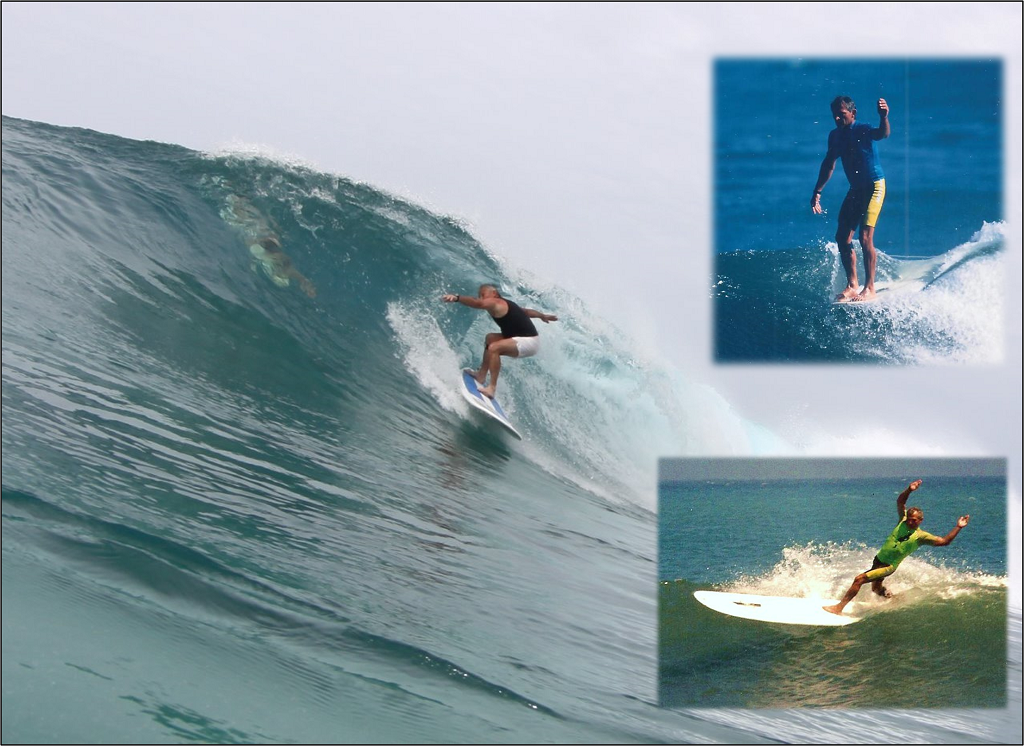
Steve has been a very accomplished competitive longboarder, once holding the world record for the longest noseride in a contest.
Scott: What was happening at that time with kneeboards, such as local brands and how they were being shaped?
Steve: Locally, there were Newport Paipos and El Paipos, and I was putting out a number, as well. Back then these boards were, of course, generally shorter and narrower, square or pintail, and they were all single fins. I started putting wings on some of my boards in the early 70’s. All this was before the Fish shape became a big thing. I eventually moved to Oahu and shaped there from 1973-1981. Besides my own label surfboards, I shaped some kneeboards for Lightning Bolt, Surfline Hawaii, and Tropical Blend.
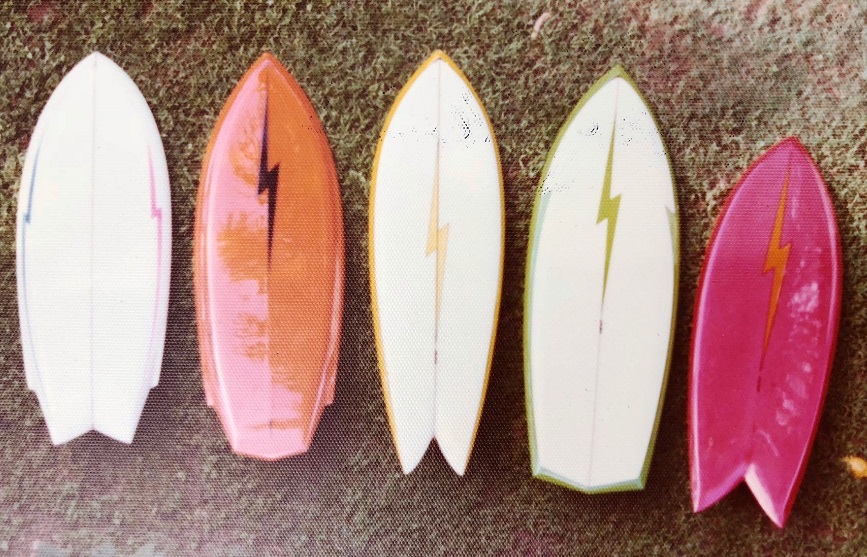
A variety of Steve’s kneeboards while in Hawaii, late 1970’s
Scott: What are you adding into your kneeboard shapes now that draws on some of the concepts you’ve learned over the decades in shaping high performance boards?
Steve: There’s a great base of kneeboard designs out there, mostly all between 5’6” to 6’4”, about 23-24” wide, and about 2 5/8”to 3” thick, with a variety of tail templates. What I feel I am contributing is adding the “Magic Model” bottom to kneeboards that have been the mainstay of my boards. This design is so unique it’s been patented (though other shapers occasionally try to rip it off). At the core is a slight rail bevel on the bottom, about 2 ½” wide, that runs from the nose to the tail, combined with a hard rail that also runs from nose to tail. And then everything inside of that bevel is a concave progressing from the nose through the middle, and then splitting into a double concave in the tail, along with some roll or vee. This is a significant variation from most other kneeboards I see having typically hard, down rails in the tail, then soft rails through the front 2/3 of the board, and some sort of concave or a flat bottom.
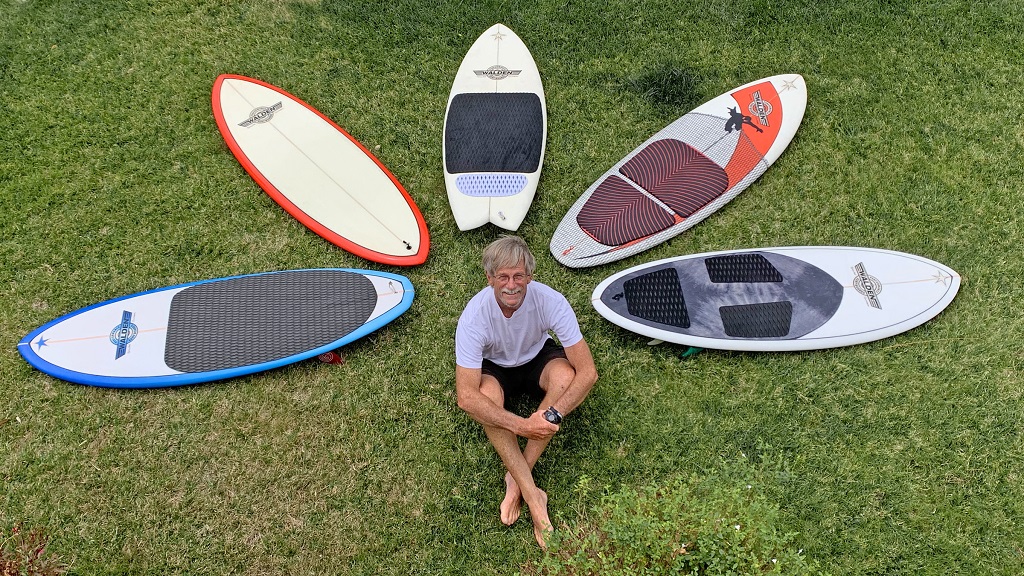
Scott and lineup of Walden kneeboards ridden in this last year
Scott: And what about the rocker throughout the board—any developments there?
Steve: Yes, I’m putting in more rocker now because the concave is providing speed and a lot of lift, while the bevel and down rails throughout add in speed in turning, but without grabbing or tracking. Increased rocker in kneeboards, especially in the tail, works with all these factors to provide a sharp, smooth turn when leaning back to continue the turn up the face, and then carving off the top of the wave, or redirecting into round house cutbacks. Speed is maintained, even across flatter sections, but there isn’t a flat bottom to fight against performance turning. That same increased rocker additionally keeps from digging the nose on the reentry and in the initial drop. And I’m offering all this in a light-weight board that increases responsiveness.
Scott: You hadn’t been in touch with much of the West Coast kneeboarding scene recently, outside of seeing occasional kneelos at local Ventura County spots. But then you came to last year’s 2023 US Kneeboarding Titles at Huntington Beach. Suddenly, there’s 60 fired up kneelos with whom to interact. How was that?
Steve: That was truly eye-opening to watch as there were guys who were clearly ripping, doing pretty amazing things. So the caliber of performance was obvious, especially when going for a Championship. And checking out the varied board designs, how everyone approaches it was also really enlightening.
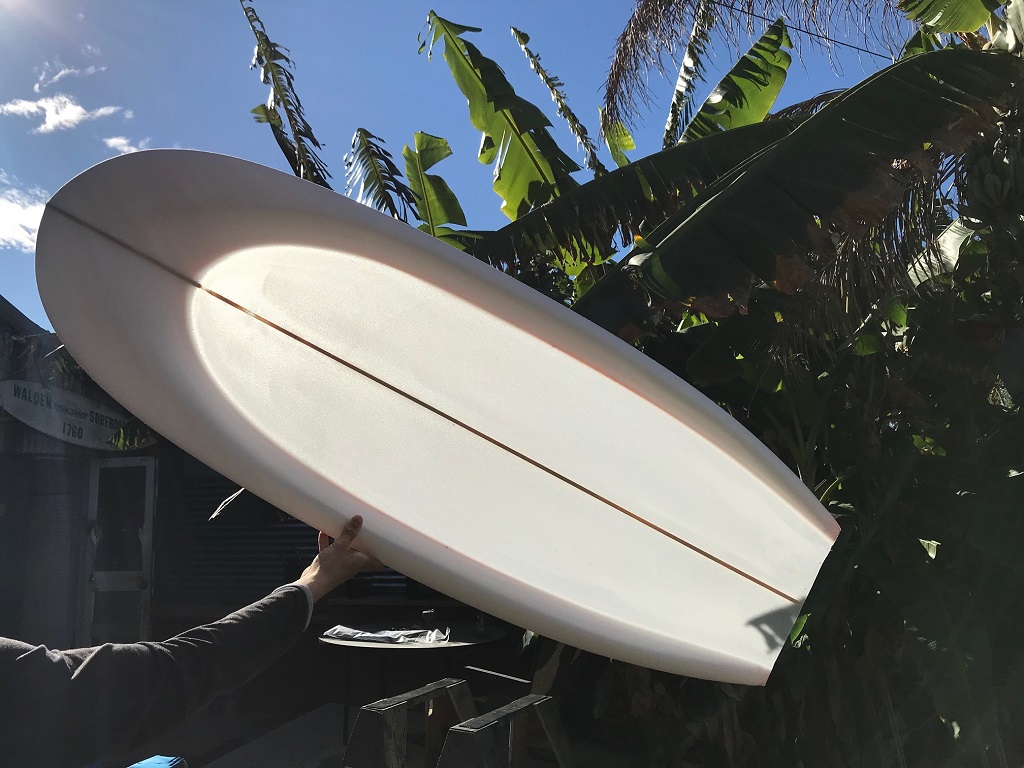
Greenough – style flex spoon
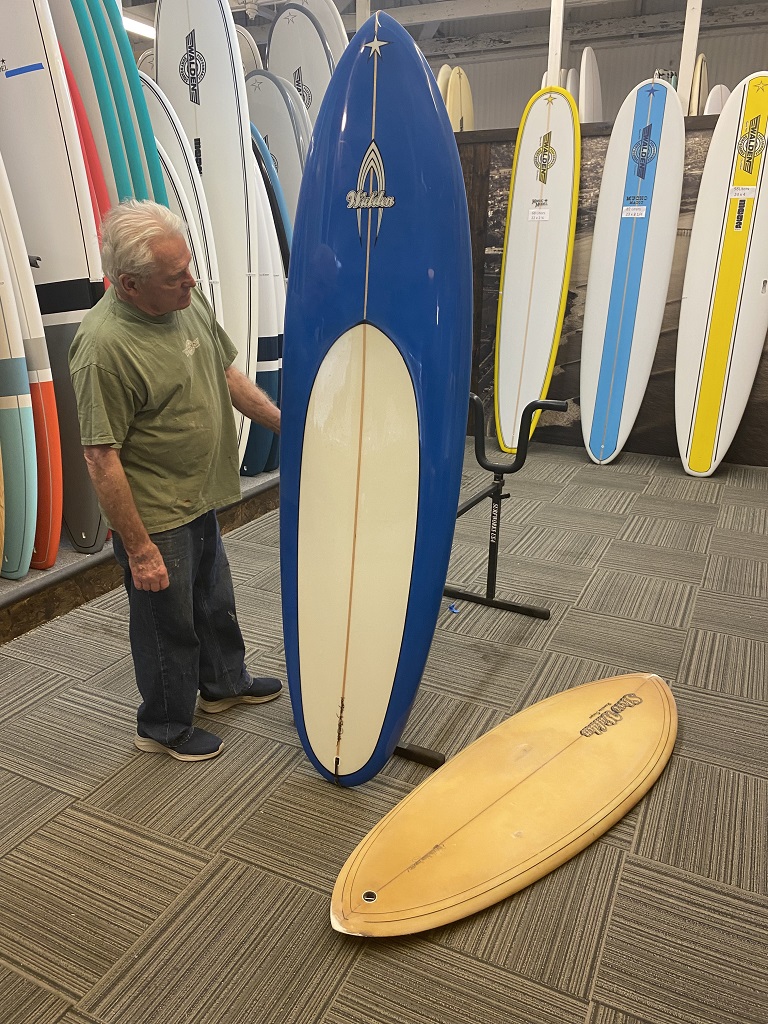
Steve with a 7’0” hybrid kneeboard for the “larger surfer”
Thanks, Steve. We’ll see you back down at the US Titles at Huntington in just a few short weeks.

